Abstract
In two equivalence experiments, a "think aloud" procedure modeled after Ericsson and Simon's (1980) protocol analysis was implemented to examine subjects' covert verbal responses during matching to sample. The purpose was to identify variables that might explain individual differences in equivalence class formation. The results from Experiment 1 suggested that subjects who formed equivalence classes described the relations among stimuli, whereas those not showing equivalence described sample and comparison stimuli as unitary compounds. Because Experiment 1 only demonstrated a correlation between describing stimulus compounds and the absence of equivalence classes, a second study was conducted. In Experiment 2, equivalence class formation was brought under experimental control through pretraining manipulations that facilitated responding either to stimulus compounds or to relations among stimuli. The results demonstrated that a history of describing stimulus compounds, when compared with describing the relations among the stimuli, interfered with the emergence of stimulus equivalence. These findings clarify individual differences in stimulus equivalence. They also demonstrate the utility of analyzing verbal reports to identify possible variables that can be manipulated experimentally.
Full text
PDF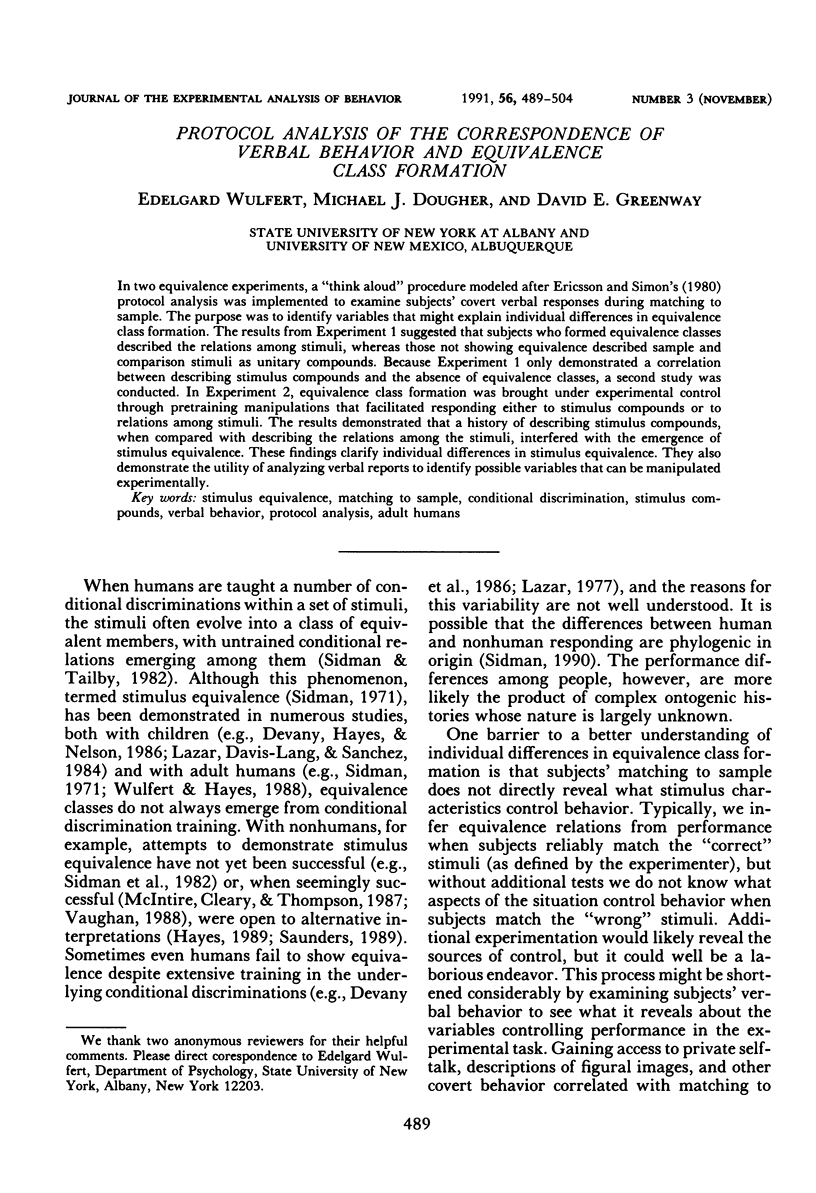
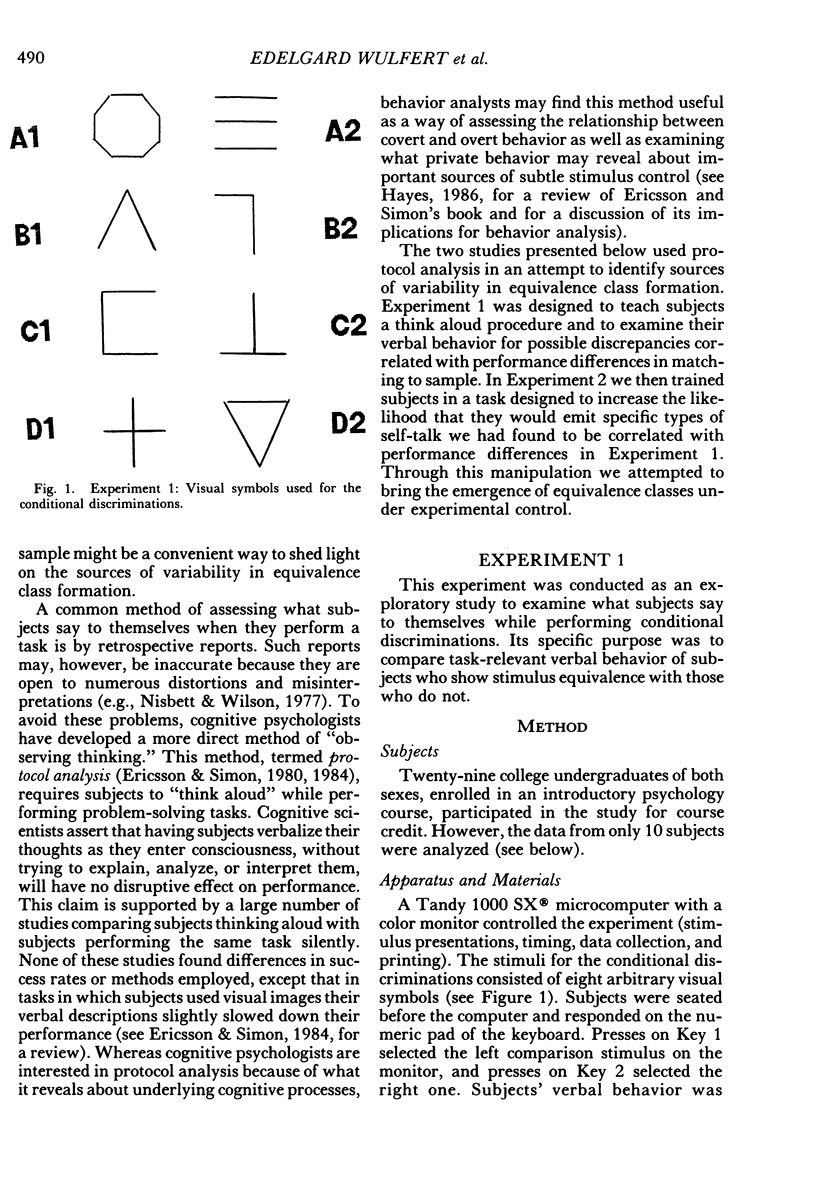
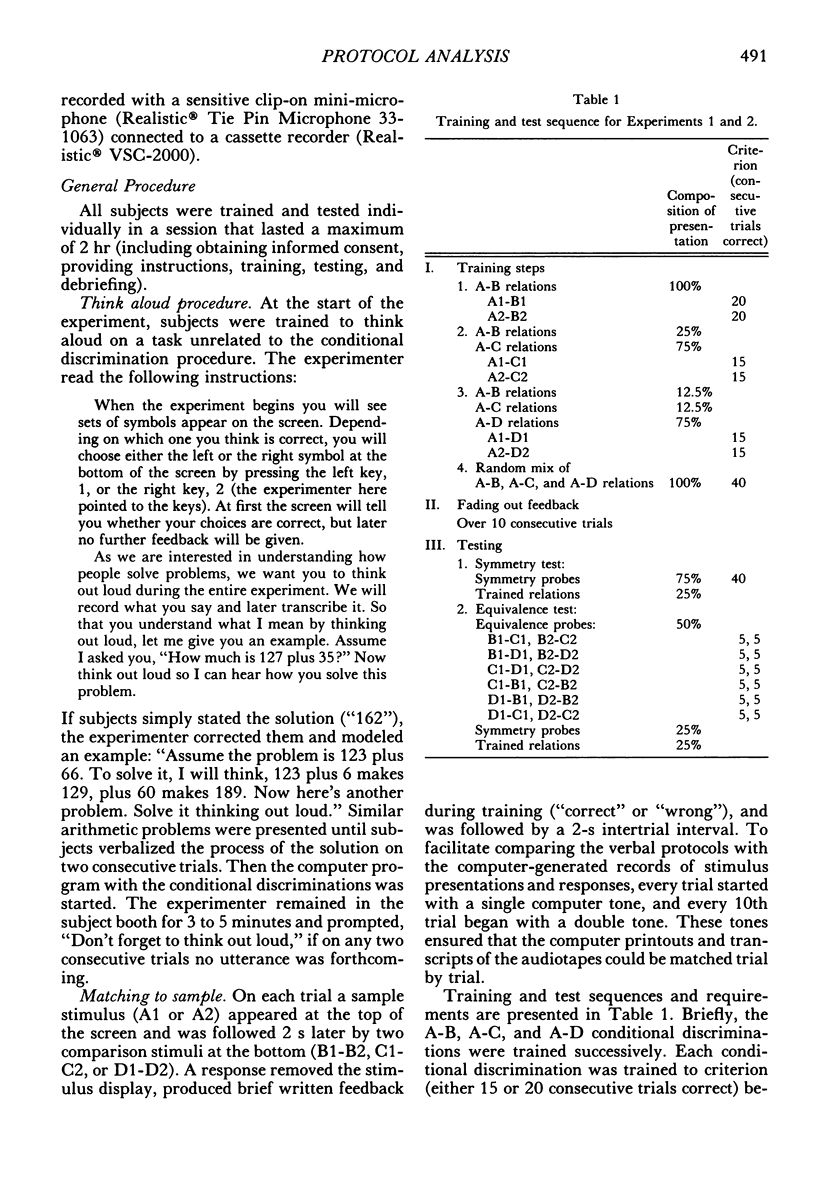
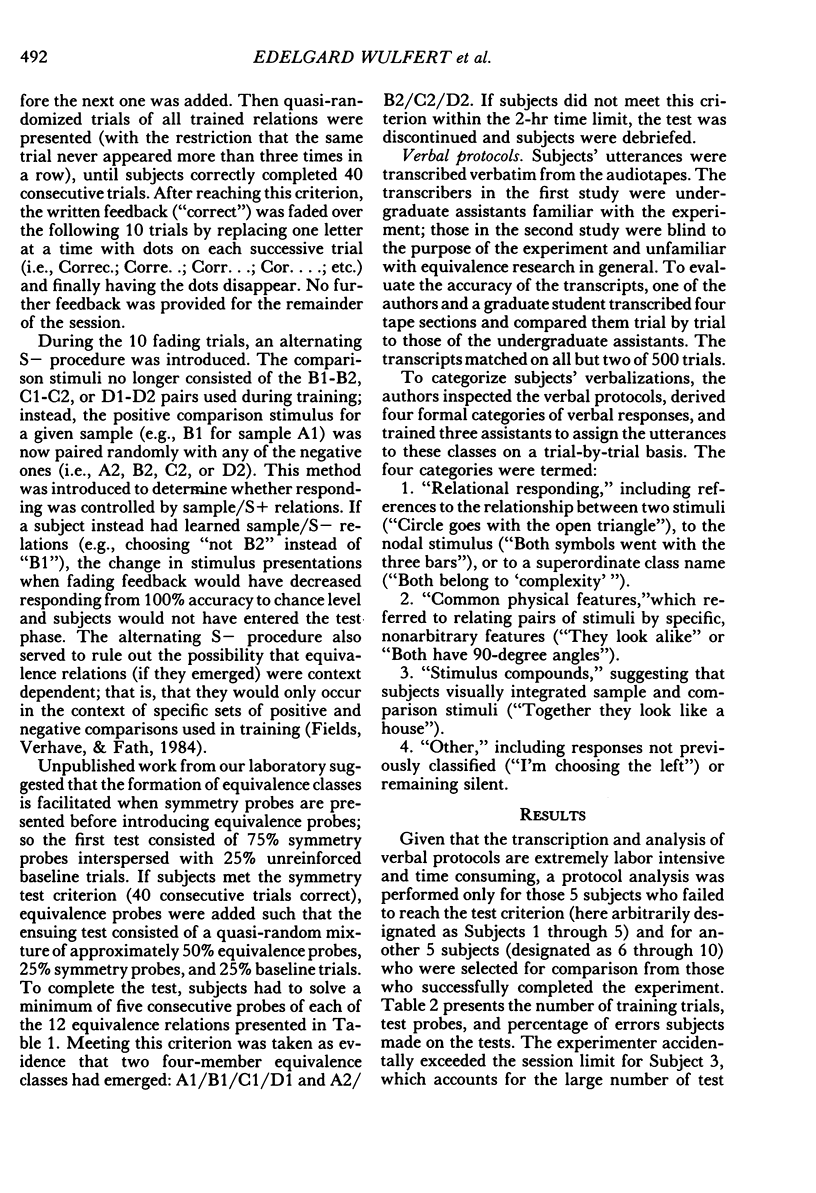


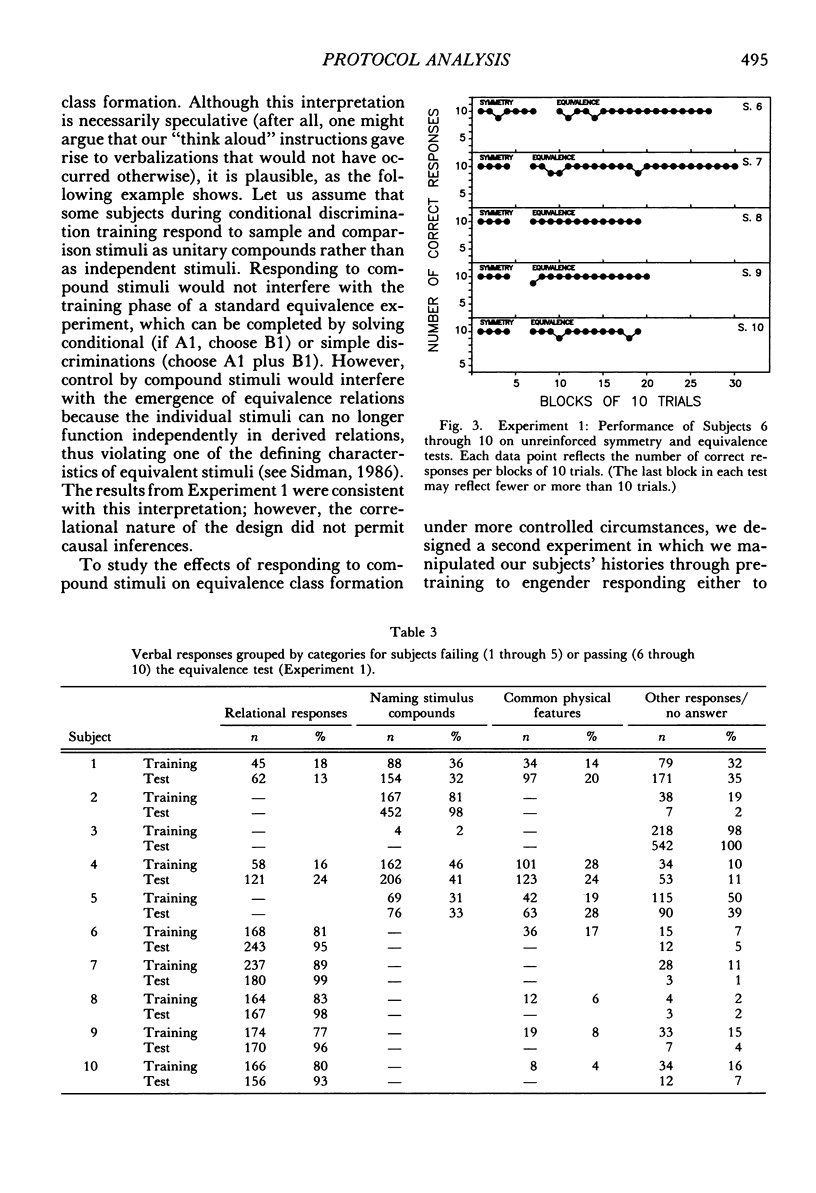
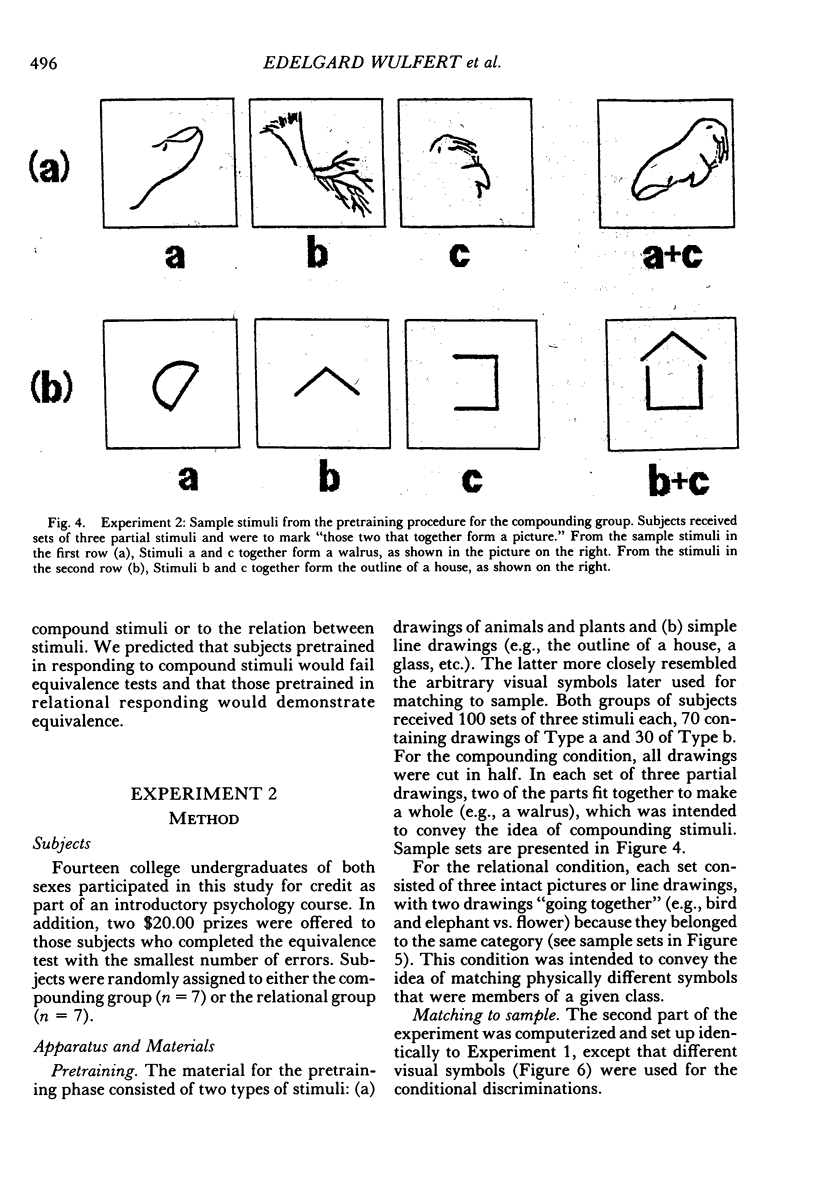
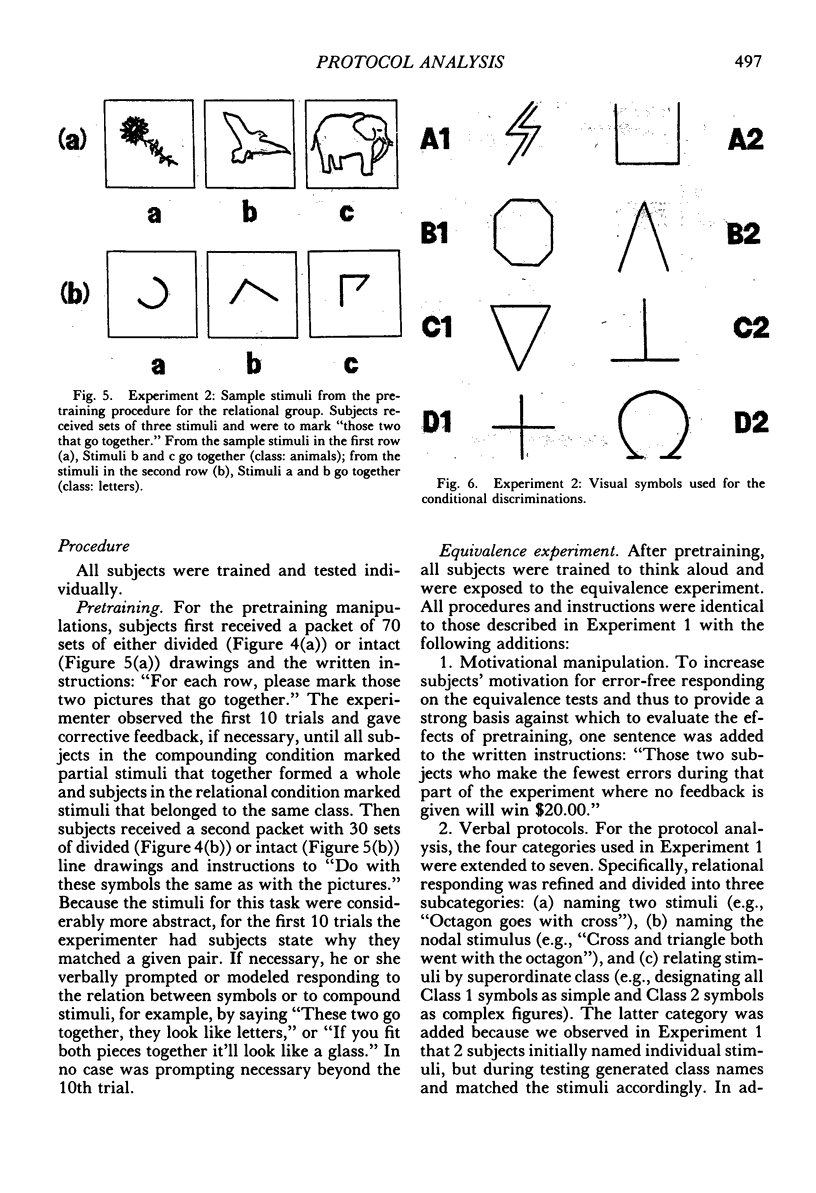
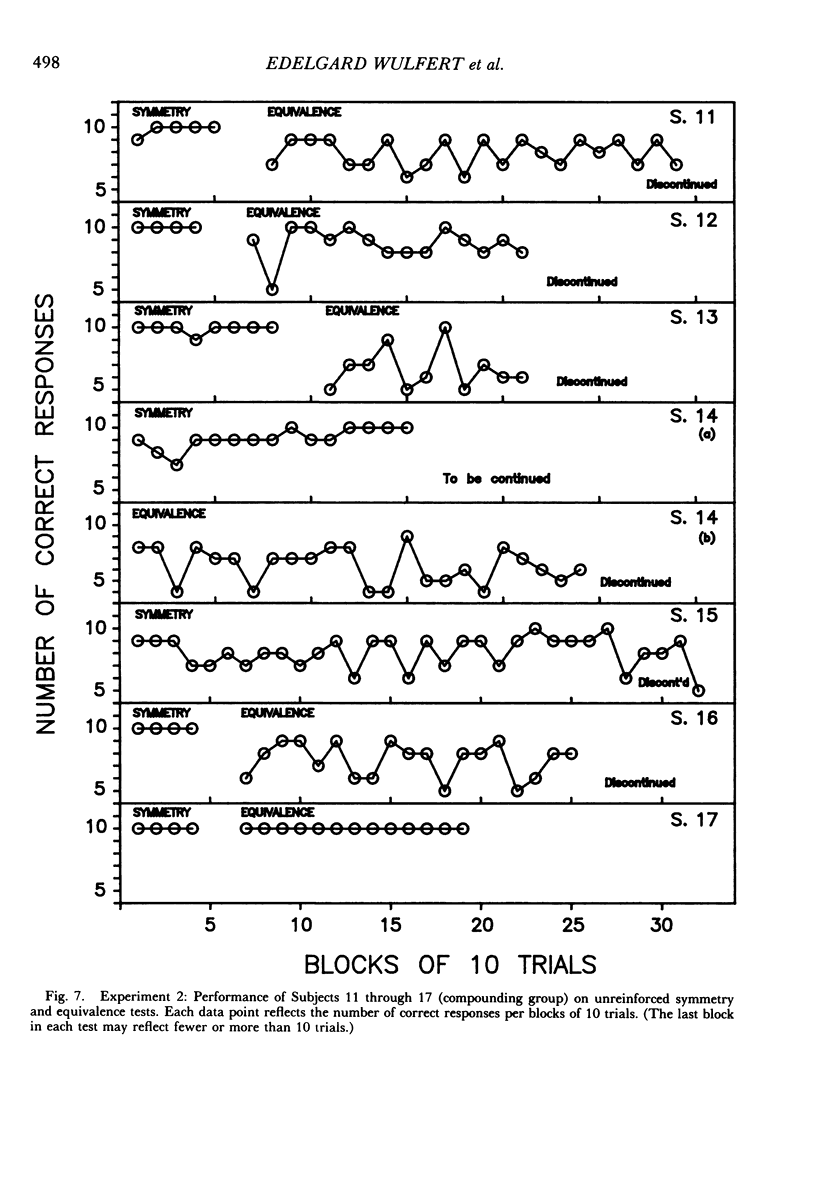
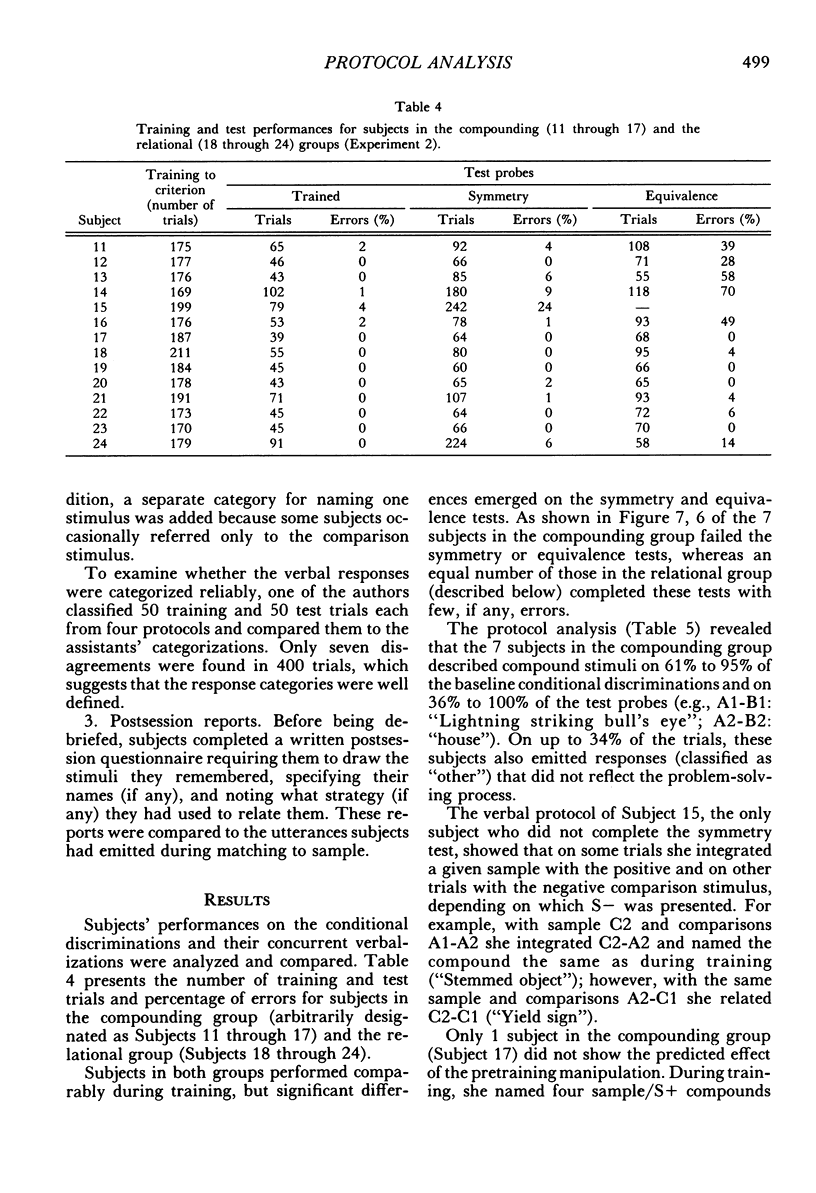
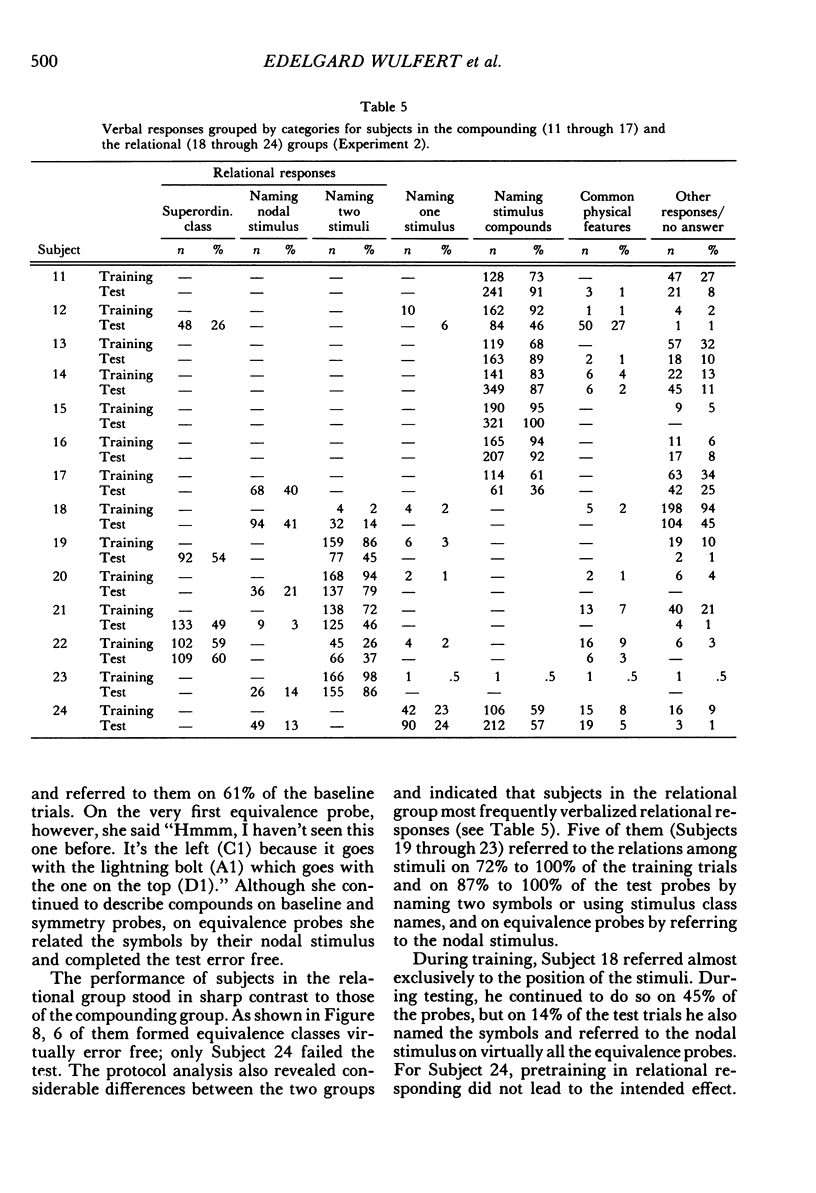
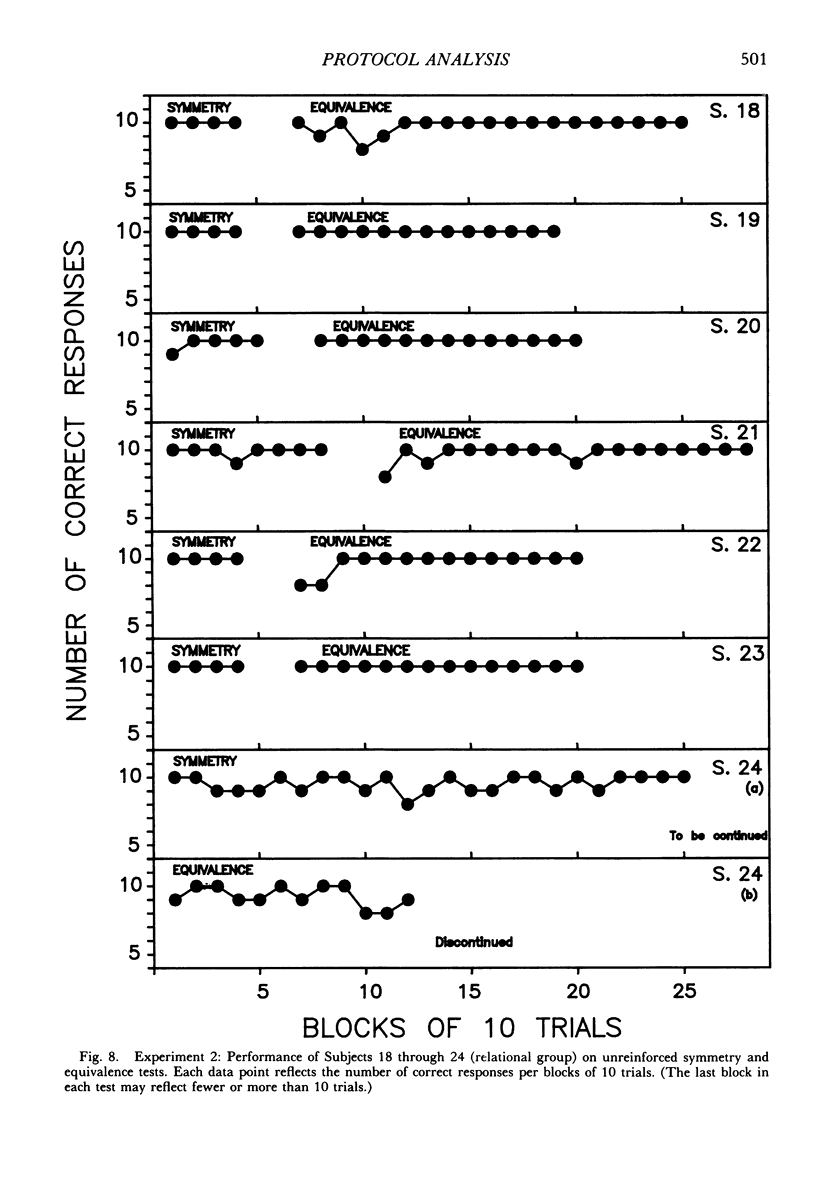
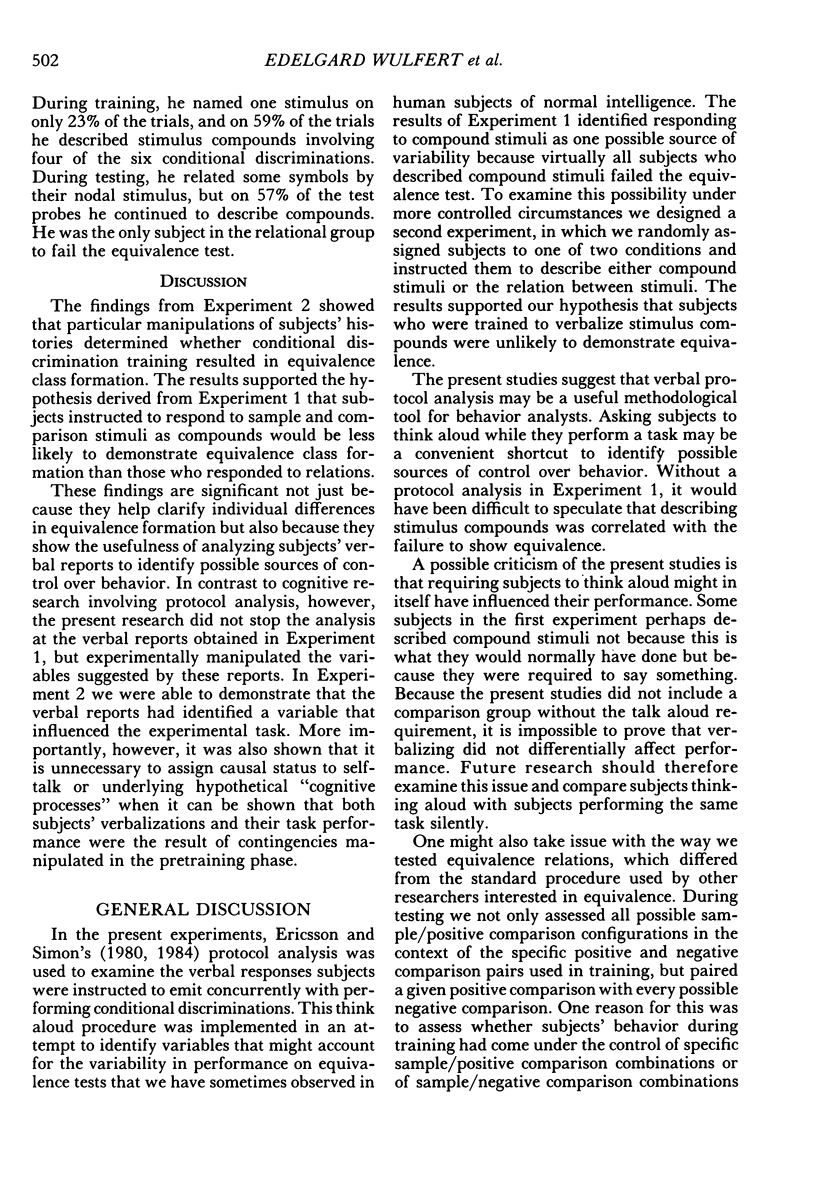
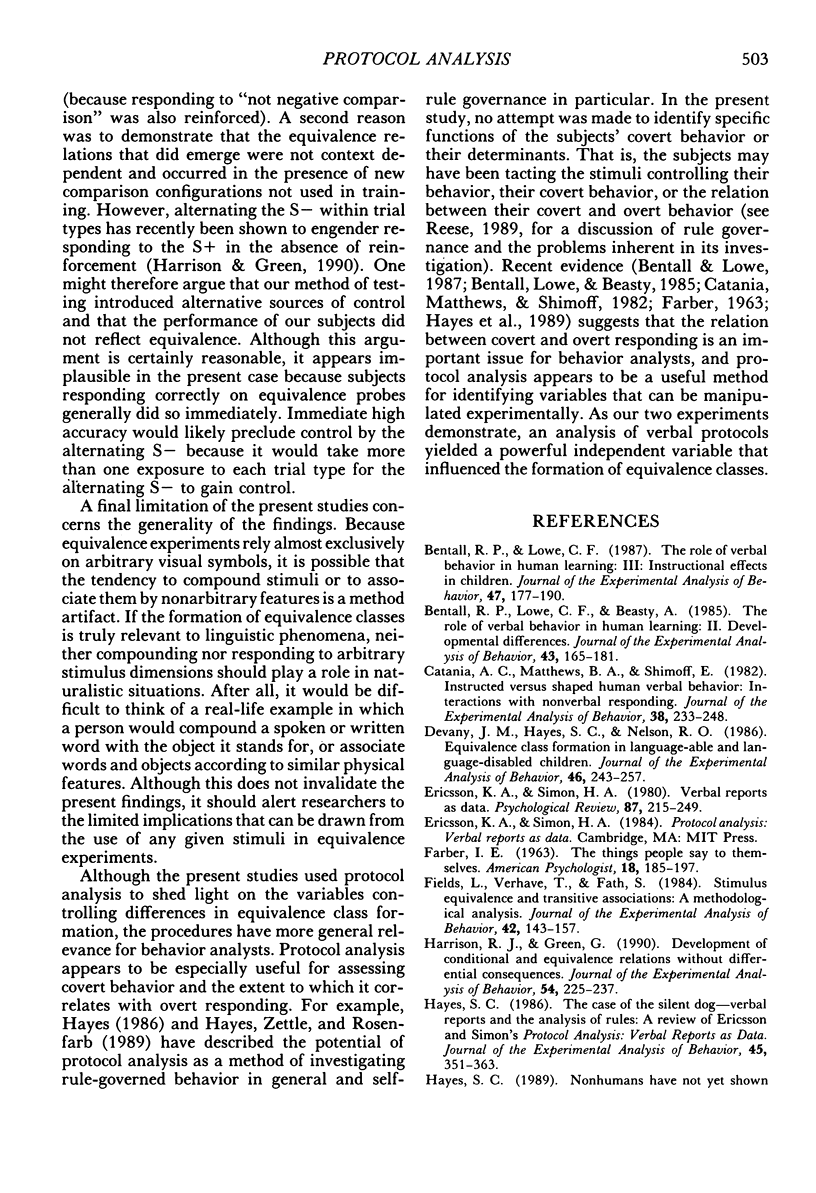
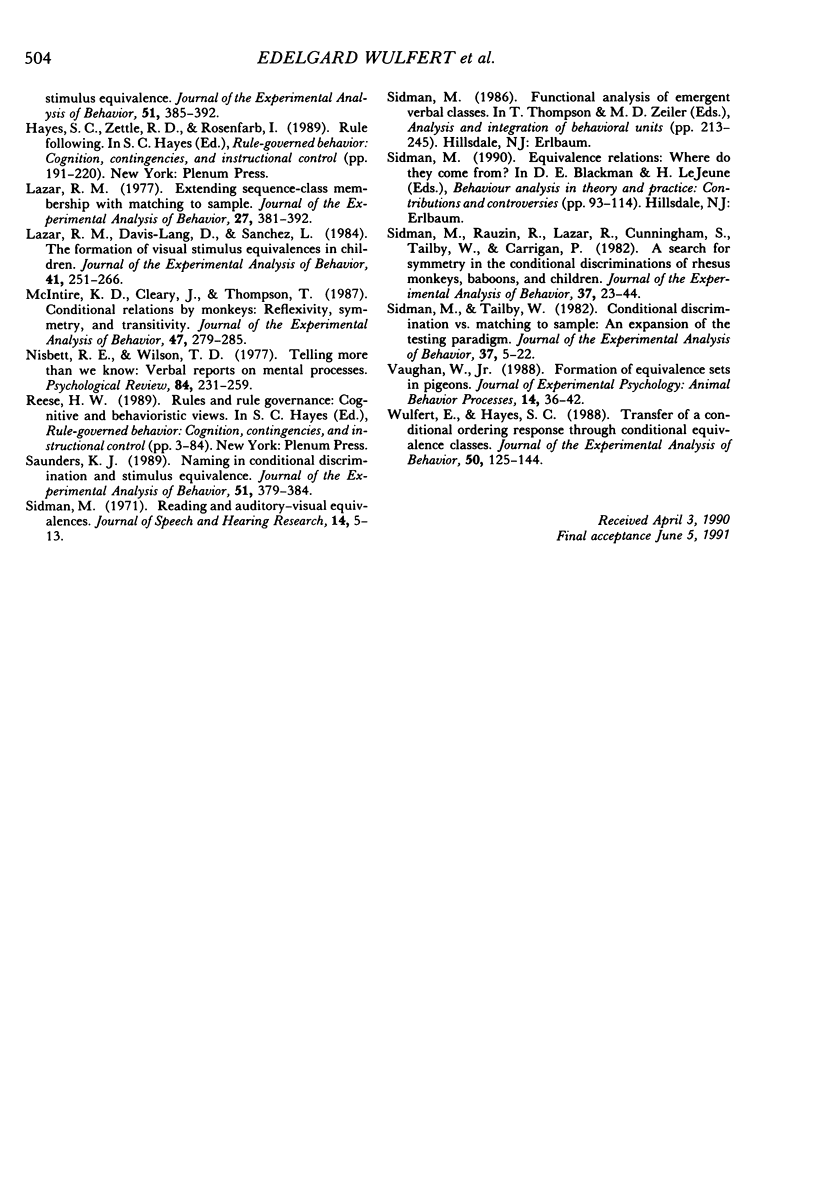
Selected References
These references are in PubMed. This may not be the complete list of references from this article.
- Bentall R. P., Lowe C. F., Beasty A. The role of verbal behavior in human learning: II. Developmental differences. J Exp Anal Behav. 1985 Mar;43(2):165–181. doi: 10.1901/jeab.1985.43-165. [DOI] [PMC free article] [PubMed] [Google Scholar]
- Bentall R. P., Lowe C. F. The role of verbal behavior in human learning: III. Instructional effects in children. J Exp Anal Behav. 1987 Mar;47(2):177–190. doi: 10.1901/jeab.1987.47-177. [DOI] [PMC free article] [PubMed] [Google Scholar]
- Catania A. C., Matthews B. A., Shimoff E. Instructed versus shaped human verbal behavior: Interactions with nonverbal responding. J Exp Anal Behav. 1982 Nov;38(3):233–248. doi: 10.1901/jeab.1982.38-233. [DOI] [PMC free article] [PubMed] [Google Scholar]
- Devany J. M., Hayes S. C., Nelson R. O. Equivalence class formation in language-able and language-disabled children. J Exp Anal Behav. 1986 Nov;46(3):243–257. doi: 10.1901/jeab.1986.46-243. [DOI] [PMC free article] [PubMed] [Google Scholar]
- Fields L., Verhave T., Fath S. Stimulus equivalence and transitive associations: A methodological analysis. J Exp Anal Behav. 1984 Jul;42(1):143–157. doi: 10.1901/jeab.1984.42-143. [DOI] [PMC free article] [PubMed] [Google Scholar]
- Harrison R. J., Green G. Development of conditional and equivalence relations without differential consequences. J Exp Anal Behav. 1990 Nov;54(3):225–237. doi: 10.1901/jeab.1990.54-225. [DOI] [PMC free article] [PubMed] [Google Scholar]
- Hayes S. C. Nonhumans have not yet shown stimulus equivalence. J Exp Anal Behav. 1989 May;51(3):385–392. doi: 10.1901/jeab.1989.51-385. [DOI] [PMC free article] [PubMed] [Google Scholar]
- Lazar R. M., Davis-Lang D., Sanchez L. The formation of visual stimulus equivalences in children. J Exp Anal Behav. 1984 May;41(3):251–266. doi: 10.1901/jeab.1984.41-251. [DOI] [PMC free article] [PubMed] [Google Scholar]
- Lazar R. Extending sequence-class membership with matching to sample. J Exp Anal Behav. 1977 Mar;27(2):381–392. doi: 10.1901/jeab.1977.27-381. [DOI] [PMC free article] [PubMed] [Google Scholar]
- McIntire K. D., Cleary J., Thompson T. Conditional relations by monkeys: Reflexivity, symmetry, and transitivity. J Exp Anal Behav. 1987 May;47(3):279–285. doi: 10.1901/jeab.1987.47-279. [DOI] [PMC free article] [PubMed] [Google Scholar]
- doi: 10.1901/jeab.1986.45-351. [DOI] [PMC free article] [Google Scholar]
- Saunders K. J. Naming in conditional discrimination and stimulus equivalence. J Exp Anal Behav. 1989 May;51(3):379–384. doi: 10.1901/jeab.1989.51-379. [DOI] [PMC free article] [PubMed] [Google Scholar]
- Sidman M., Rauzin R., Lazar R., Cunningham S., Tailby W., Carrigan P. A search for symmetry in the conditional discriminations of rhesus monkeys, baboons, and children. J Exp Anal Behav. 1982 Jan;37(1):23–44. doi: 10.1901/jeab.1982.37-23. [DOI] [PMC free article] [PubMed] [Google Scholar]
- Sidman M. Reading and auditory-visual equivalences. J Speech Hear Res. 1971 Mar;14(1):5–13. doi: 10.1044/jshr.1401.05. [DOI] [PubMed] [Google Scholar]
- Sidman M., Tailby W. Conditional discrimination vs. matching to sample: an expansion of the testing paradigm. J Exp Anal Behav. 1982 Jan;37(1):5–22. doi: 10.1901/jeab.1982.37-5. [DOI] [PMC free article] [PubMed] [Google Scholar]
- Wulfert E., Hayes S. C. Transfer of a conditional ordering response through conditional equivalence classes. J Exp Anal Behav. 1988 Sep;50(2):125–144. doi: 10.1901/jeab.1988.50-125. [DOI] [PMC free article] [PubMed] [Google Scholar]


